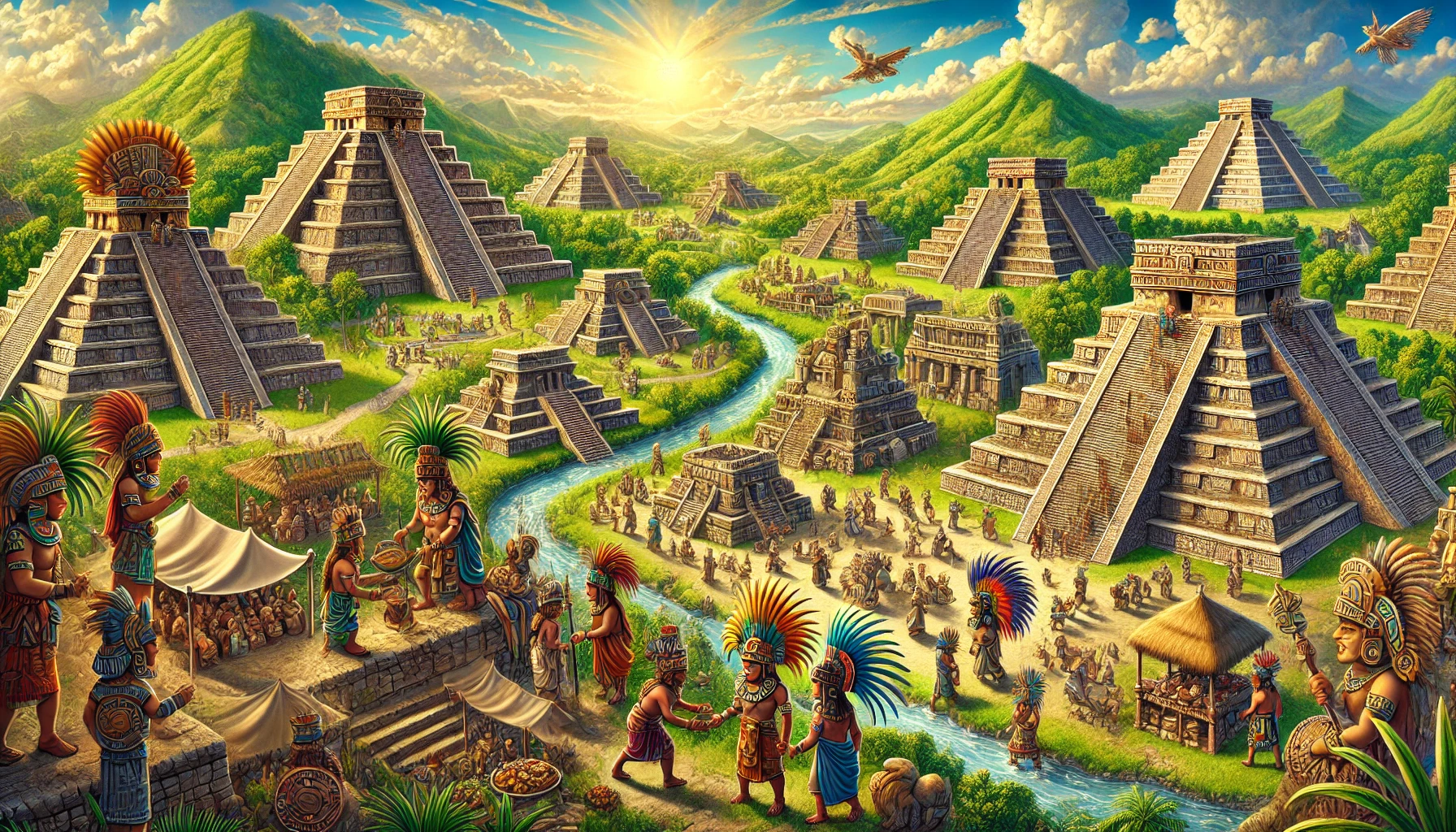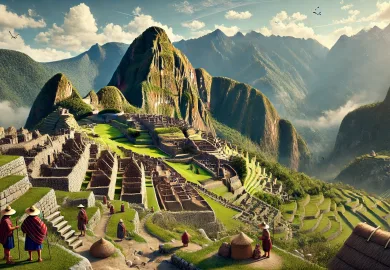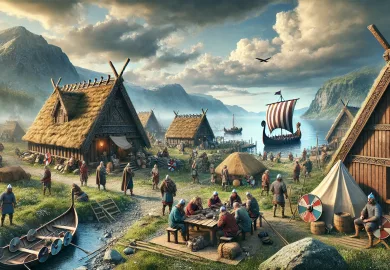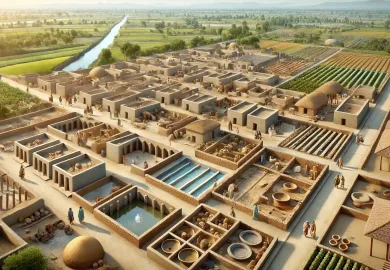
The Aztec civilization, one of the most powerful and influential cultures in ancient Mesoamerica, left an indelible mark on history. Flourishing between the 14th and 16th centuries, the Aztecs developed a complex society with a rich culture, advanced technologies, and a profound understanding of the cosmos. Their legacy endures through their impressive architectural achievements, sophisticated agricultural techniques, and vibrant art. In this article, we delve into the fascinating world of the Aztecs, exploring their society, religious practices, daily life, and the lasting impact of their culture on modern times.
The Aztec Society: A Hierarchical Structure
The Aztec society was highly stratified, with a well-defined social hierarchy that governed every aspect of life. At the top of this hierarchy was the tlatoani, the emperor, who held absolute power and was considered semi-divine. The emperor’s role was not only political but also religious, as he was believed to be the earthly representative of the gods. Below the emperor were the nobility, known as the pipiltin, who were typically warriors, priests, and government officials. This class enjoyed significant privileges, including land ownership and the right to wear elaborate clothing and jewelry.
The next tier of society comprised the macehualtin, the commoners, who formed the backbone of the Aztec economy. They were primarily farmers, craftsmen, and traders, responsible for producing the goods and food that sustained the empire. Despite their lower status, the macehualtin could advance socially through acts of bravery in battle or by excelling in trade or craftsmanship.
At the bottom of the social ladder were the tlacotin, or slaves, who were often prisoners of war or people who had fallen into debt. While their lives were difficult, Aztec slavery was not entirely hopeless. Slaves could buy their freedom or be freed by their masters, and their children were born free. This complex social structure was essential in maintaining order in the vast and diverse Aztec Empire.
Religion and Cosmology: The Heart of Aztec Life
Religion played a central role in Aztec life, influencing everything from politics to daily activities. The Aztecs were polytheistic, worshipping a pantheon of gods and goddesses, each associated with different aspects of life and nature. The most important deities included Huitzilopochtli, the god of war and the sun; Tlaloc, the god of rain and agriculture; and Quetzalcoatl, the feathered serpent god of wind and wisdom.
The Aztecs believed that the gods had created and destroyed the world several times and that they lived in the Fifth Sun, a world destined to end in disaster. To prevent this, they performed elaborate rituals and sacrifices to appease the gods and ensure the continued existence of their world. Human sacrifice, though shocking by modern standards, was a crucial aspect of Aztec religion. Victims, often captured warriors, were offered to the gods in ceremonies that were believed to nourish the gods and maintain cosmic balance.
Temples, such as the Great Pyramid of Tenochtitlán, were the epicenters of religious activity. These grand structures, adorned with intricate carvings and vibrant murals, were where priests conducted rituals and sacrifices. The Aztec calendar, which consisted of a 365-day agricultural cycle and a 260-day ritual cycle, guided religious events and was integral to the timing of festivals and ceremonies.
Daily Life in the Aztec Empire
Life in the Aztec Empire was marked by a blend of work, worship, and communal activities. The average Aztec day began at dawn, with most people rising early to tend to their duties. For farmers, this meant working in the fields, cultivating maize, beans, squash, and other staple crops using sophisticated agricultural techniques like chinampas—floating gardens that maximized arable land in the swampy environment around Tenochtitlán.
Craftsmen and traders were also vital to the economy. The Aztecs were skilled artisans, producing elaborate textiles, pottery, and jewelry. Pochteca, the long-distance traders, traveled vast distances to exchange goods such as obsidian, feathers, and cocoa, contributing to the empire’s wealth and connecting it with other Mesoamerican cultures.
Family life was structured and communal, with extended families often living together in calpulli—neighborhoods that served as the basic units of Aztec society. Education was important, with children of all social classes receiving training. Boys were taught skills appropriate to their future roles as warriors, farmers, or craftsmen, while girls were trained in domestic duties, although some also became priestesses or artisans.
Festivals and religious ceremonies punctuated daily life, providing opportunities for socialization and community bonding. These events were often accompanied by music, dance, and feasting, reflecting the Aztecs’ love of artistic expression and their deep connection to their religious beliefs.
The Legacy of the Aztecs: Influence on Modern Culture
The fall of the Aztec Empire in 1521, following the Spanish conquest led by Hernán Cortés, marked the end of an era. However, the legacy of the Aztecs lives on, influencing modern culture in various ways. Many aspects of Aztec society, such as their agricultural techniques, architectural innovations, and artistic styles, have left a lasting imprint on Mexican culture.
The Nahuatl language, spoken by the Aztecs, still survives today, with over a million speakers in Mexico. Many Nahuatl words have also been incorporated into the Spanish language, and by extension, into global vocabulary—words like chocolate, tomato, and avocado all have Nahuatl origins.
The symbolism of the Aztec civilization is also evident in modern Mexican identity. The image of the eagle perched on a cactus, holding a serpent in its beak, which was a crucial element of the Aztec foundation myth, is now featured on the Mexican flag. Additionally, the Day of the Dead (Día de los Muertos), a festival with pre-Columbian roots, incorporates elements of Aztec rituals honoring the dead, blending indigenous traditions with Catholic practices introduced by the Spanish.
In the realm of art and architecture, the influence of the Aztecs can be seen in various forms. The pyramids and temples of ancient Mexico continue to inspire modern architects, while contemporary Mexican artists often draw upon Aztec themes and motifs in their work. The Aztecs’ deep connection to their environment and their complex cosmology continue to captivate historians, anthropologists, and the general public alike, ensuring that the legacy of this remarkable civilization endures.
In conclusion, the Aztecs were a complex and highly organized society with a rich cultural heritage that continues to resonate today. From their sophisticated social structure and religious practices to their innovations in agriculture and architecture, the Aztecs made significant contributions to human civilization. Their legacy, preserved in language, art, and cultural practices, remains a vital part of the cultural fabric of Mexico and beyond. As we continue to study and appreciate the achievements of the Aztec Empire, we gain a deeper understanding of the diversity and richness of human history.








